Here is another deal in progress at Rally Home Buyers LLC. As we always say, we buy houses in any condition in Baton Rouge. We estimate how much we need to spend to repair and upgrade the house and how much we can sell it for. Then we figure in a modest profit margin to come up with our “as-is cash offer” price.
We have a purchase agreement in place with the owner based on the cost of repairs expected from our telephone conversation with the owner. However, when our CEO, Richard McCray, went to see the house, he discovered the cost of repairs would be much greater than our first estimate.
The house seemed nice enough at first glance. It had a new roof and seemed like a good investment. But closer inspection revealed some major problems with termite damage and foundation issues.
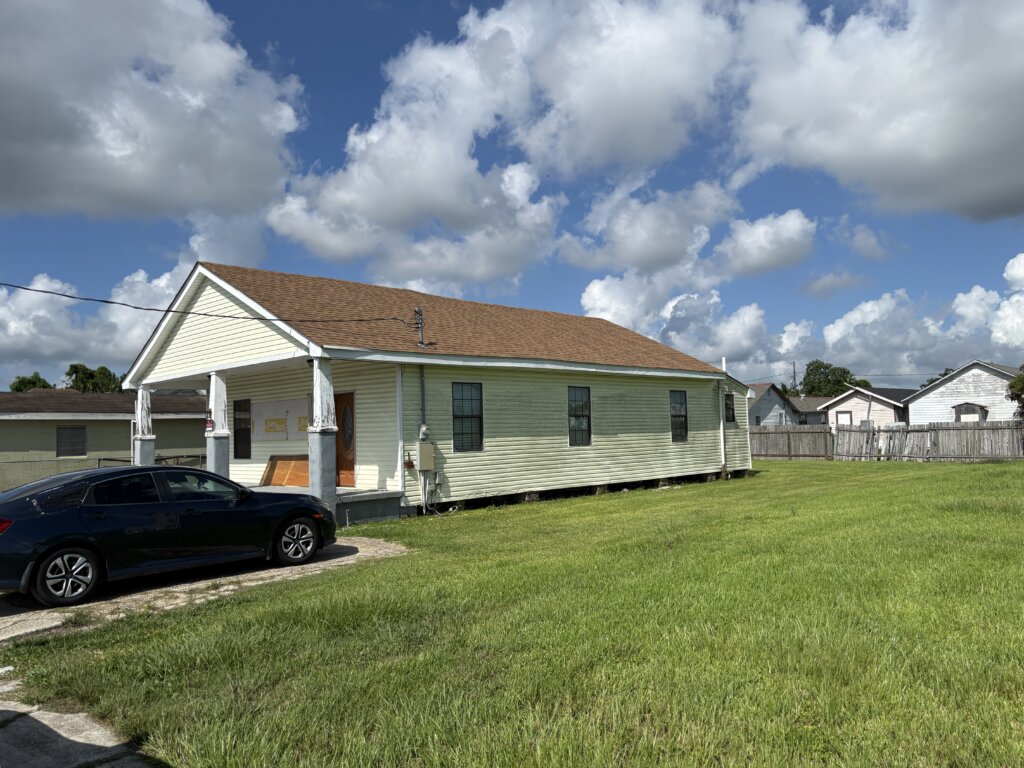
As you can see on the front of this house, some of the vinyl siding is missing. Actually, that is a good thing because I was able to see the termite damage behind it. Often, vinyl siding is used to cover problems on a house, like wood rot or termite damage. Much of this house is covered in vinyl siding, and I cannot tell what is behind it. But since I did see some termite infestation, I can only guess that there is more that I am not able to see.
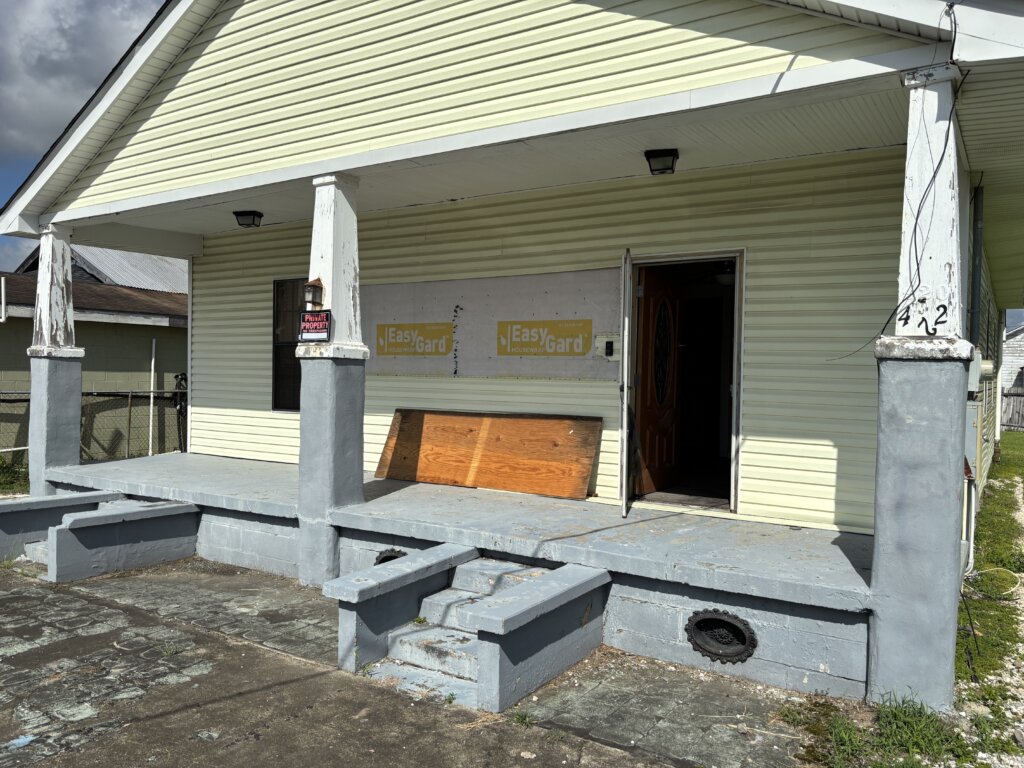
In this photo, we have a close-up of the termite trails. These are little dust tunnels that the termites build so that they are not exposed to the light. As they eat the wood underneath, they use this material to build little dust tunnels which they travel in. These mud tubes protrude out from the covering, and oftentimes, on the interior of the house, you can see these popping out of the paint. On the exterior of a house that is on a slab, these dust tunnels may be seen running up the side of the slab from the soil to the top of the slab where they will enter the house.
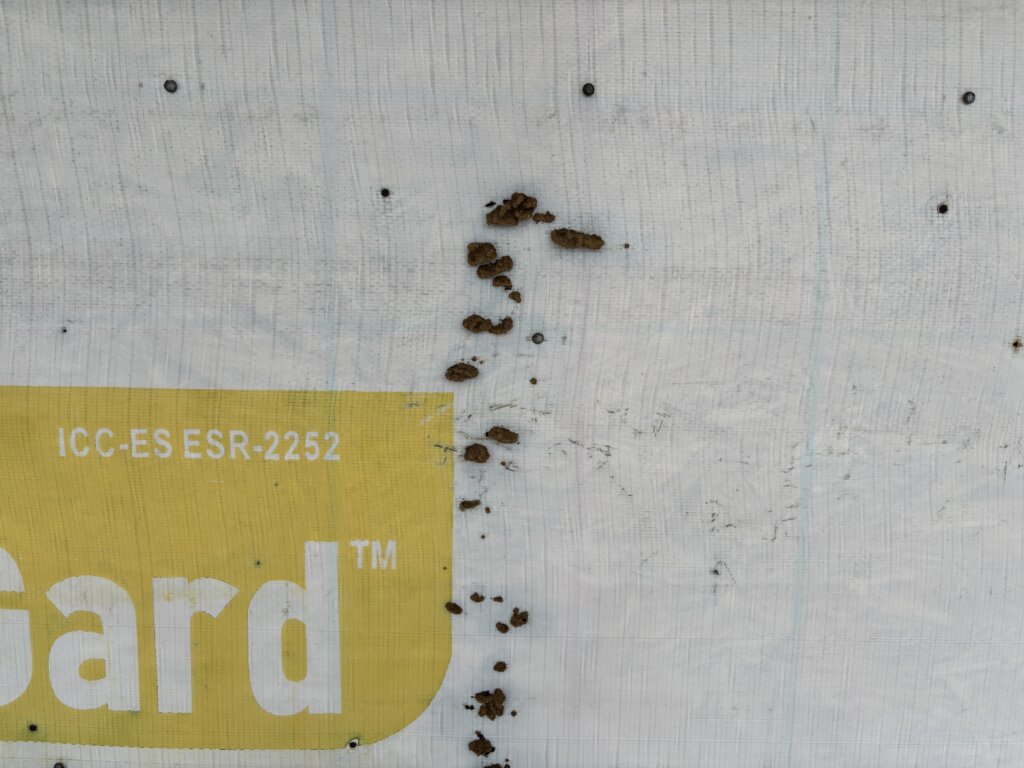
In the porch area, where the ceiling meets the wall, you can see the termite mud tubes poking out of the surface.
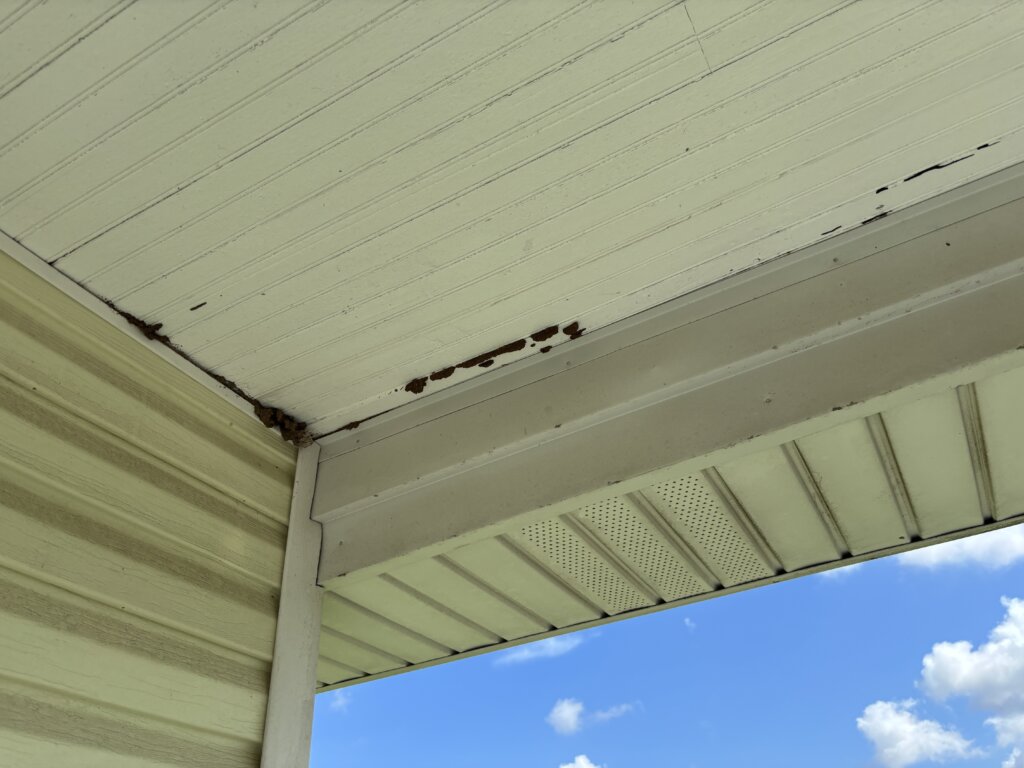
The flooring in this house was like a roller coaster. In this photo, you can see how the floor waves and dips. Several spots were very soft and spongy. Common signs of subfloor termite damage. Other areas of the house had similar waves and dips, but were less noticeable in photos.
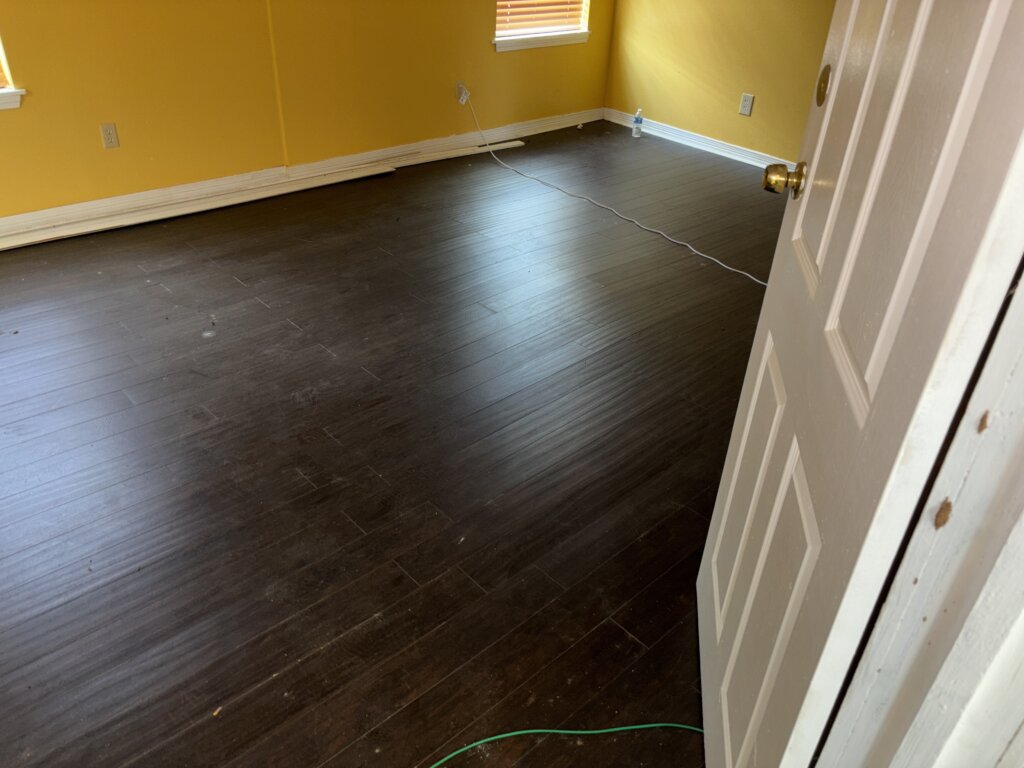
As you can see in this photo, there is some termite damage to the subfloor, and some of the subfloor is broken. You can also see that one of the piers is leaning. Indicating potential foundation problems. This was consistent in several areas of the house.
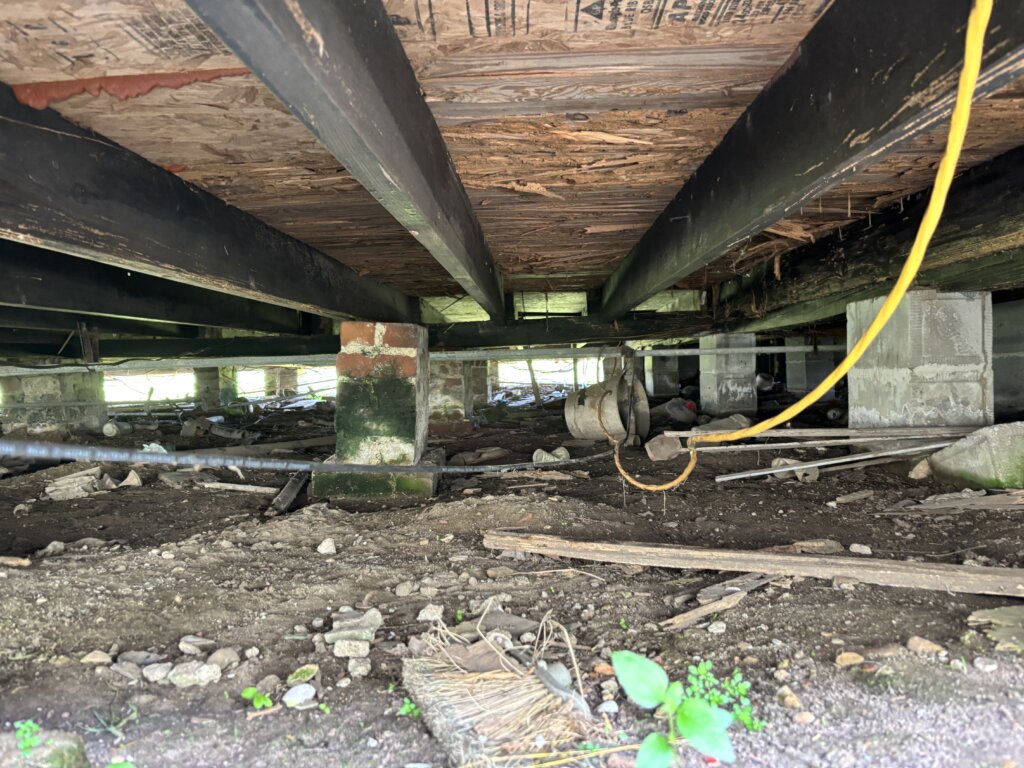
Again, we buy homes in any condition, even those with major termite infestations and structural damage. However, these kinds of issues do require a significant price reduction. We are currently talking with the owner to work out a win-win solution.

